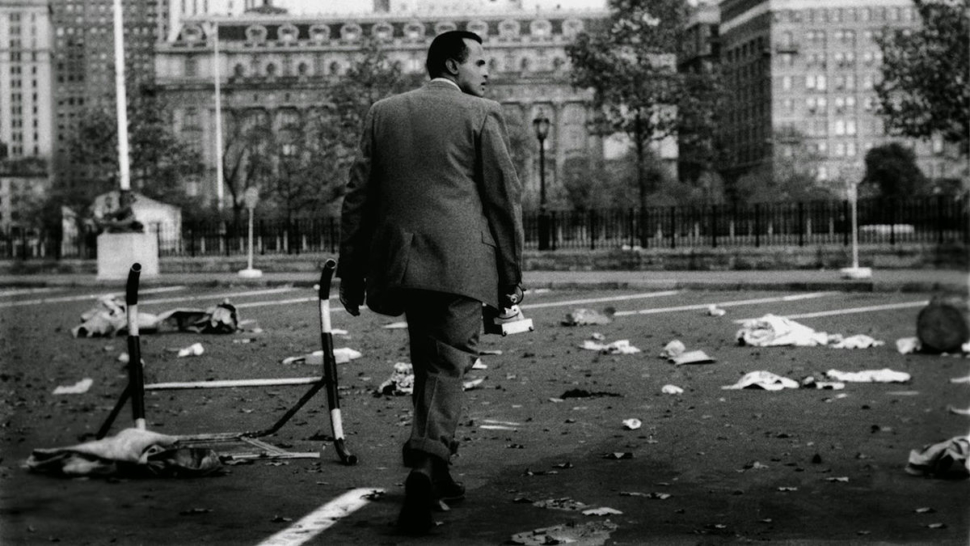In these days of pandemic, climate catastrophe and creeping – marching – authoritarian movements, I’ve taken comfort in old-school end-of-the-world movies. Not necessarily those of the past 10 or 20 years, your 2012 or San Andreas or even further back, Independence Day.
No, I’m talking about the meat-and-potatoes, shit-has-gone-seriously-south movies from the 1930s through the 1960s and, in a few instances, as late as the 1980s. And not even the best-remembered films: Planet of the Apes is about as nihilistic as it gets, when you think about it. It took 20th Century Fox four more movies to get humankind out of the corner it had painted itself into, but they did it. Kinda. It’s still too optimistic.
There’s something weirdly comforting about a story that wipes the slate clean. As much as we don’t really want our planet to be forever fucked in real life, watching worst-case scenarios is comforting, kind of like that kid in the flashbacks/flash-forwards in The Terminator watching that hollowed-out TV set with a fire burning inside. How poignant. Nothing like the smell of burning plastic to make your bunker feel like home.
Sometimes it just feels right to lean in to the end.
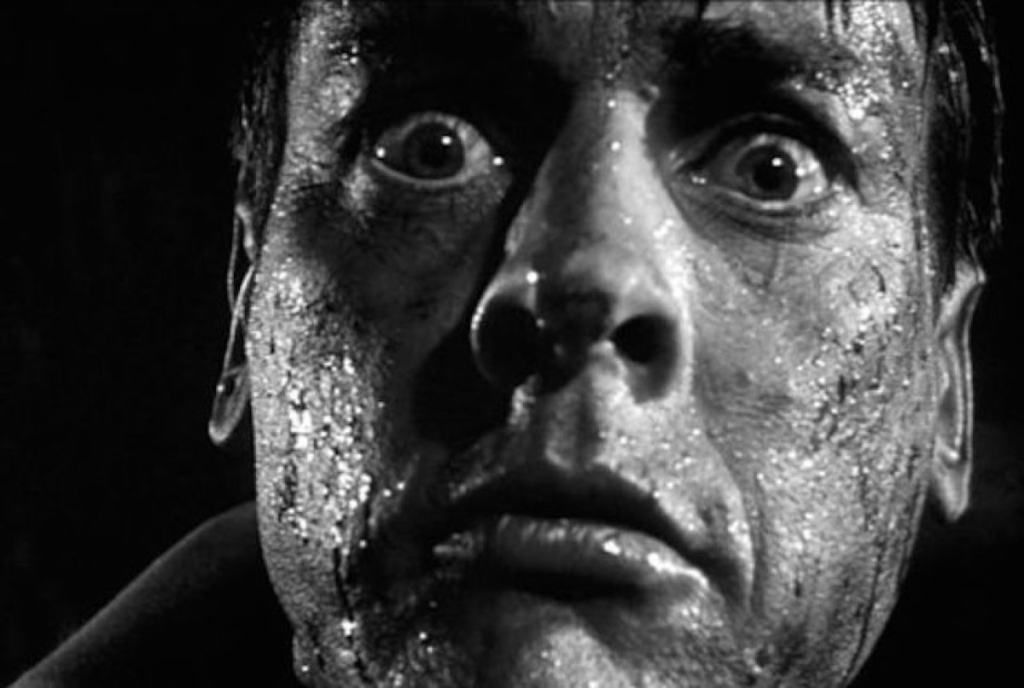
Loss of self… and the world too
One of the most influential and downright nihilistic movies ever debuted in 1956 and it continues to influence apocalyptic storytelling.
Invasion of the Body Snatchers was based on a book, Jack Finney’s “The Body Snatchers,” whose plot was fairly closely adhered to, up to a point, although the book had an ending that echoed another of those “wow, that was close!” stories, War of the Worlds. But director Don Siegel’s 1956 Invasion of the Body Snatchers dared to end in a manner that could be considered ambiguous or cautious, but there’s little doubt: It’s the end of the world as we know it.
The plot – familiar due to the classic status of the original and remakes including a very nearly peerless exercise in paranoia released in 1978 – is about seed pods that drift across space and land on Earth. The seeds grow into replications of people, albeit emotionless and driven to spread.
A lot has been made of the story’s allegory, which has been imagined as a warning about varying kinds of politics and freedom, from Communism to the anti-Communist hysteria of the era. But the heart of the story for this film and its remakes and imitators is loss of self.
Despite the lead character’s frantic warning at the end, we can be confident no one will pay attention to him, the world will end and nobody will notice. We’re all too busy being supplanted by emotionless replicas.
More often, though, the end of the world in films of the 1950s and 1960s were flashier than a truck full of seed pods moving from town to town in California.
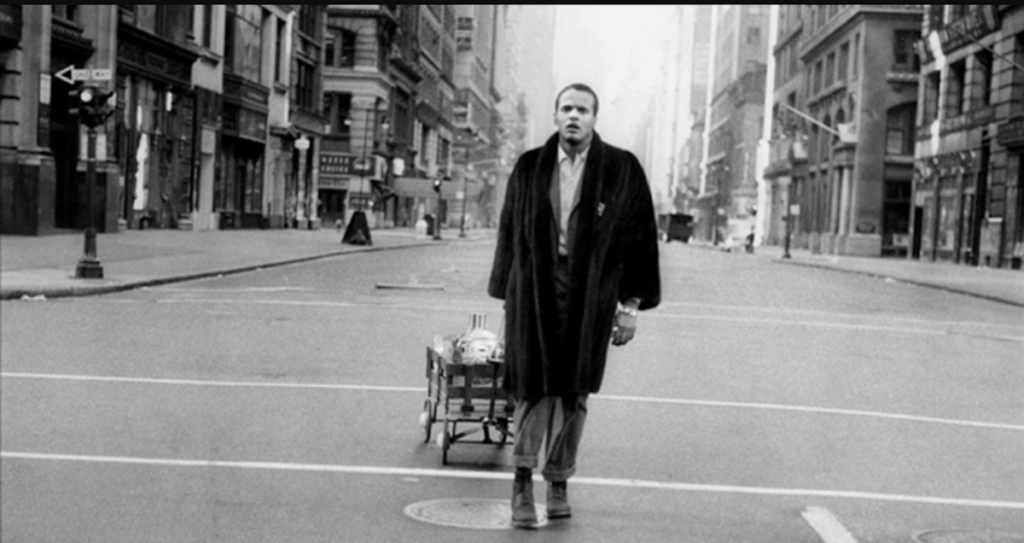
Sis, get your gun
Speaking of breathtaking Big Apple apocalyptic imagery: The World, the Flesh and the Devil has some striking images of deserted New York City. The 1959 film recounts the ultimate love triangle: three people – played by Harry Belafonte, Inger Stevens and Mel Ferrer – find themselves possibly the last people on Earth after radiation kills most of the population. Belafonte’s character goes the “making a life in the aftermath” route that we later see from Charlton Heston’s 1971 The Omega Man, including taking up residence in a NYC building. The twist, as the cast implies, is that Belafonte is not the last man on Earth. The story explores race and relationships and – Okay, this is a mild violation of my “no optimistic endings” rule – ends with a title card that reads “The Beginning.”
That “new beginning” trope gets trotted out in a few more films, from the dark and paranoid Panic in the Year Zero to Night of the Comet. A low-budget American International Pictures release from 1962, Panic in the Year Zero inspired more than a few worried imaginings from me when I saw it on TV as a kid. It’s a movie that I guess would be a hit now among the “as long as we’ve got a few rifles and some provisions we’ll be OK” crowd. And any movie that co-stars Ray Milland and Frankie Avalon as a father-and-son team of apocalypse survivors can’t be anything but entertaining cheese.
Night of the Comet leans into the same “quick, get a gun” aesthetic – albeit in this case they’re mostly wielded by two high-school age sisters, played by Catherine Mary Stewart and Kelli Maroney. In this case, though, the survivors are for the most part as pragmatic as they are charming. The 1984 film’s marketing was no doubt aimed at provoking giggles about two Valley Girls surviving the apocalypse but overlooked is writer/director Thom Eberhardt’s conclusion that these are exactly the right young women you want as the guiding force in your after-the-end-of-the-world … er, world.
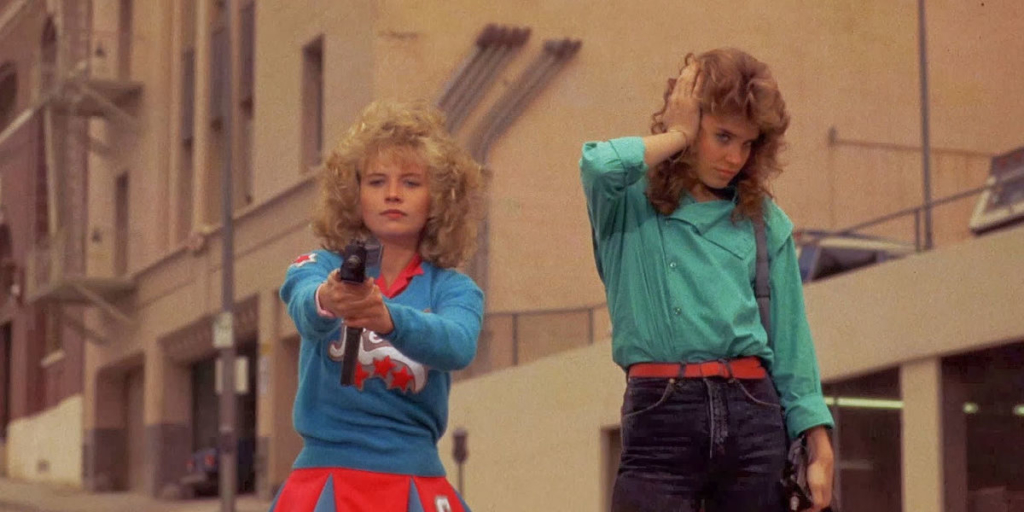
Dr. Strangelove and Failsafe seemed like two sides of the same coin when they were released in 1964, with darkly comic and just plain dark treatments of nuclear war. And that demonstrates how, as unlikely as it seems, even the end of the world can be told in many ways. Night of the Comet is sprightly and fun, Dr. Strangelove is so twisted it’s hilarious and even the dark and earnest stories, like The Omega Man and its iterations like I Am Legend, or director John Carpenter’s apocalypse trilogy – The Thing, Prince of Darkness and In the Mouth of Madness – let us embrace the dark little sliver in us that wants things to end.
Let me state here that I’m really tired of zombies. I tuned out on The Walking Dead when it turned into even more of an exercise in cruelty and random death than when it started out. I haven’t watched it in years.
But the best end-of-the-world story, for all its forbidden thrills and haunting imagery, is the story told over the course of several films by director George Romero in his Night of the Living Dead, Dawn of the Dead and, to a lesser extent, later films in his series. Night’s low budget meant that it was necessarily low-key. By the time Romero made Dawn he could muster not only a deserted shopping mall – almost certainly inspiring Night of the Comet’s shopping scenes – but helicopters and hordes of zombies.
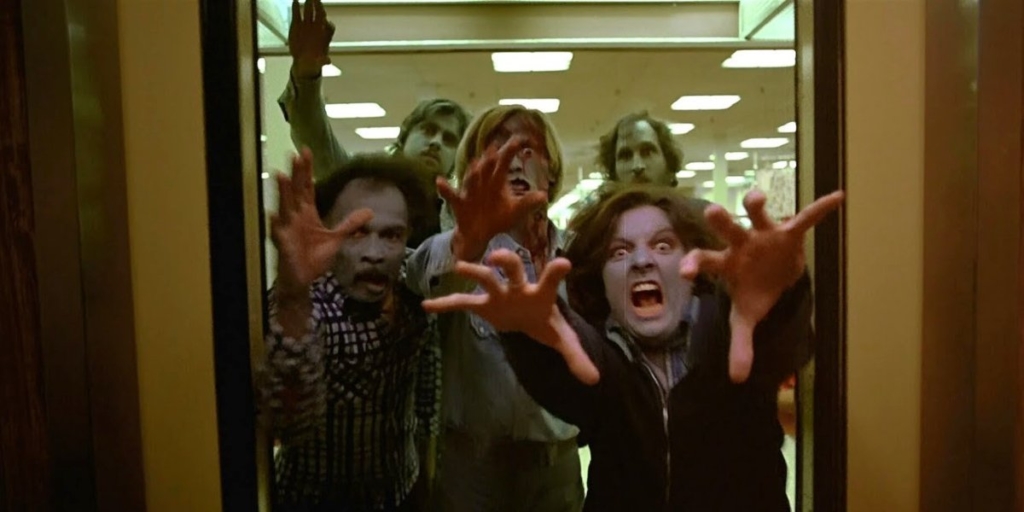
Yes, Dawn is satirical and cheeky and revels in its gore. It’s smart and commercial and inspired every kind of imitator. And it’s very, very slightly optimistic ending echoes not only The World, The Flesh and The Devil but every fantasy of survival and loss that any of us have ever had.
In a world-ending catalogue of end-of-the-world stories, it’s not only the pinnacle of Romero’s movies but it has just about everything an apocalyptic story needs: action, humor and for-its-time-biting satire about the commercial nature of society. It is meat-and-potatoes end-of-the-world storytelling.
Dawn and Night of the Comet and When Worlds Collide do all that through budgets and effects that make later, CGI-aided movies feel like baby food: too easy to chew.
Just a rocket ride away
Does When Worlds Collide, directed by Rudolph Mate’ and released by Paramount in 1951, fit my dismally pessimistic view of what makes a good end-of-the-world movie? Let me note that fewer than 50 people worldwide – that we know of for certain – escape the end of Earth. So yes. Yes it does.
When Worlds Collide is, in some ways, the template for every end-of-the-world movie to come. The story revolves around scientists at a South African observatory who hire a very mercenary pilot to fly some photographic plates to New York. He’s in the dark as to what’s in the photos but bluffs his way into meetings of scientists and – even as he constantly asks when he’s going to get paid – soon realizes what the observatory caught on film: A wandering star, Bellus, is headed for a collision with Earth. There’s no possibility that a mistake has been made. The only possible salvation is that Bellus is accompanied by Zyra, a planet that might be hospitable to life. But only if – and this is a big if, obviously – a space-faring ark can be built and launched in the months before the disaster.
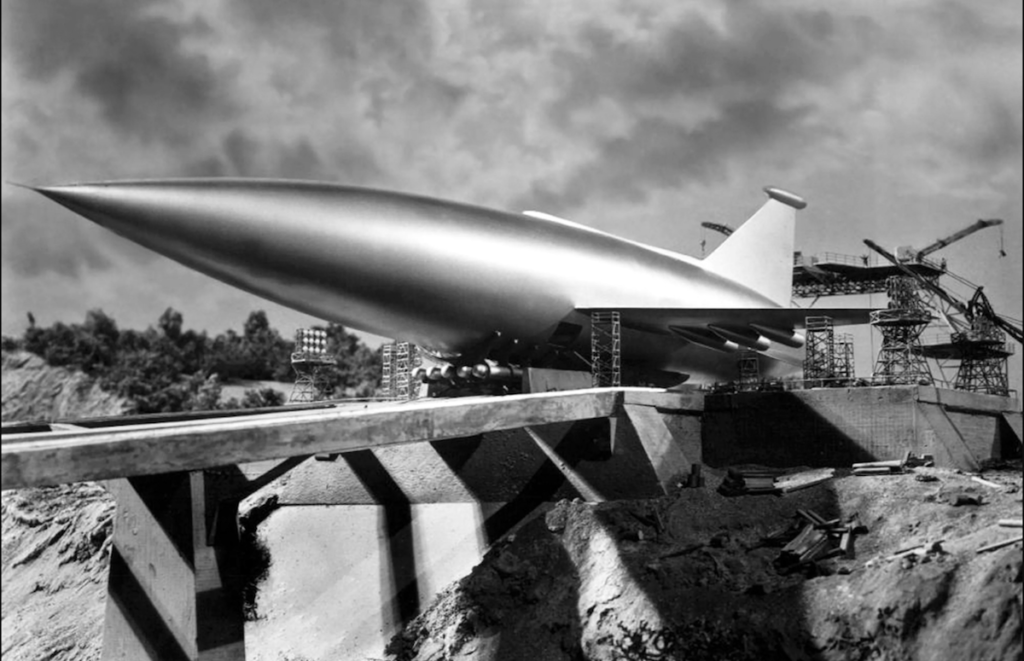
This leads, in a quick aside as the pilot takes a scientist’s daughter/assistant to dinner, to a moment when the “give me my money” hero begins lighting cigarettes with currency. Because money means little now and will mean even less in a few months.
Other classic end-of-the-world tropes follow, including a shot of deserted New York City and a millionaire in a wheelchair who, because he funds the rocketship project, gets to demand that he be on the flight and says bitter things about how mankind will eventually storm the launch site. “You don’t know what your ‘civilized people’ will do to cling to life. I do because I know I would cling if I had to kill to do it.’” Some foreshadowing there, you think?
Spoilers for a 71-year-old movie: The ship makes it to Zyra, which – with a horizon that looks to be a not-entirely-successful painted backdrop – appears to be an untamed wilderness. Half-a-hundred survivors gaze out toward that horizon. It’s a happy ending for a movie that swings from cynical to practical to optimistic in less than 90 minutes.
And it might be the ultimate end-of-the-world movie because, well, the world ends.
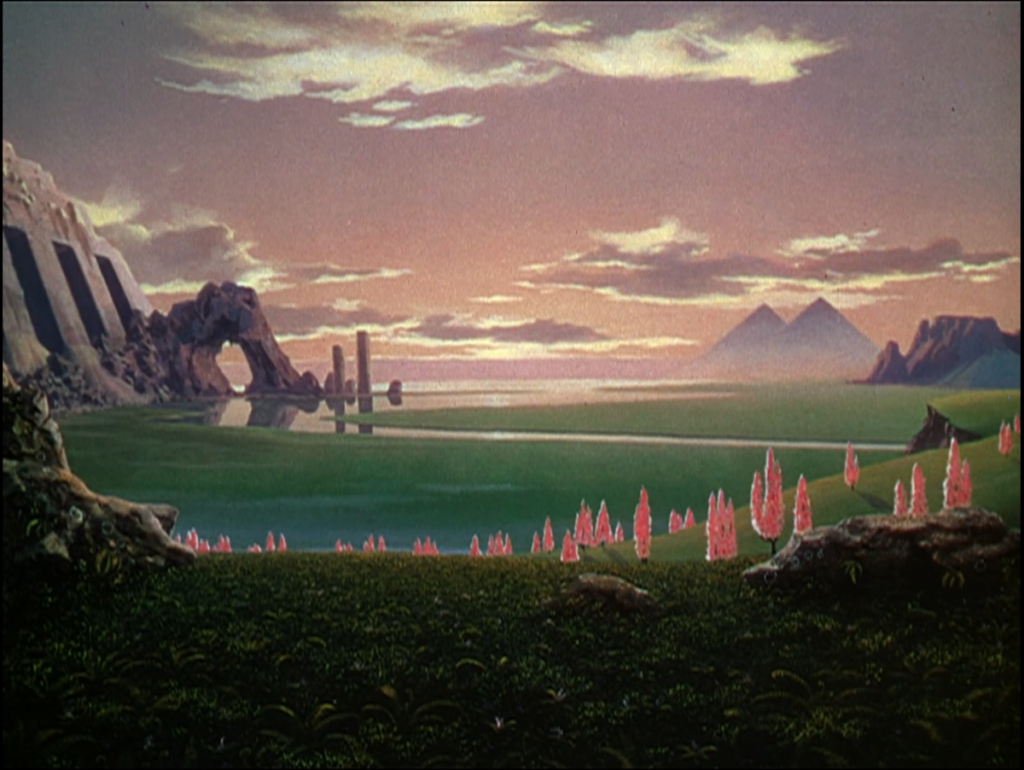
And in the end…
The real end of the world movies are not movies where the world almost ends but everything turns out okay. After all, the best end of the world movies are those in which the world actually ends. (Okay, maybe a handful of people survive for a little while on an island, but that’s it.) 2012? Nope. Enough people on those big boats to give the movie an optimistic ending. Armageddon? Deep Impact? Get outta here. I’ve had more traumatic experiences when I was a kid and fell off my bike.
They’re movies where shit culminates and it’s all over except for a few people who manage to survive for a while … and you know they won’t last long because what are they going to do for antibiotics?
There are those of us who believe Independence Day and War of the Worlds were way too optimistic. The Road and The Day After are more like it. We like it bleak around these parts and some of the bleakest stories came in the middle decades of the 20th century. The apocalypse was better back then.
